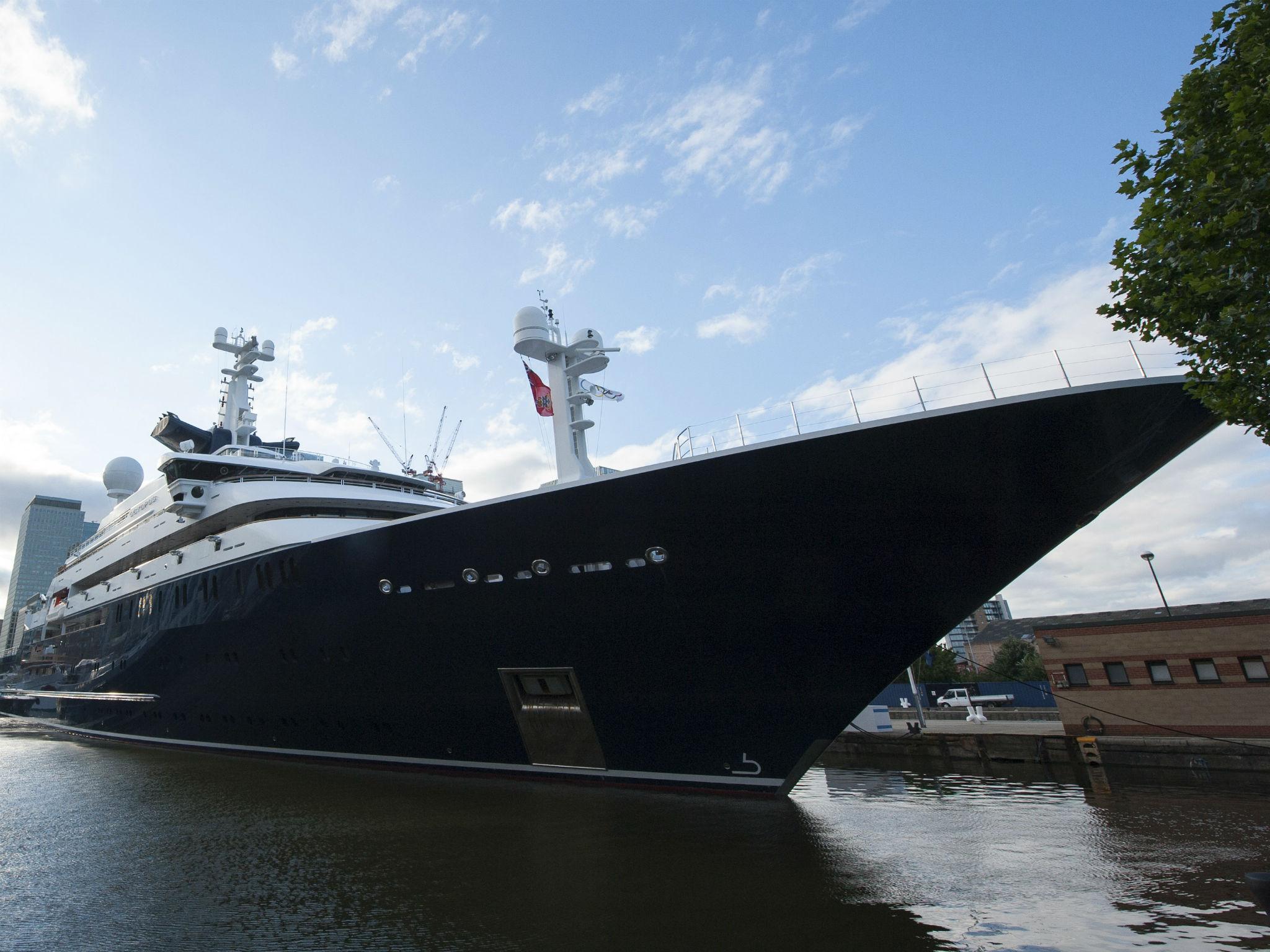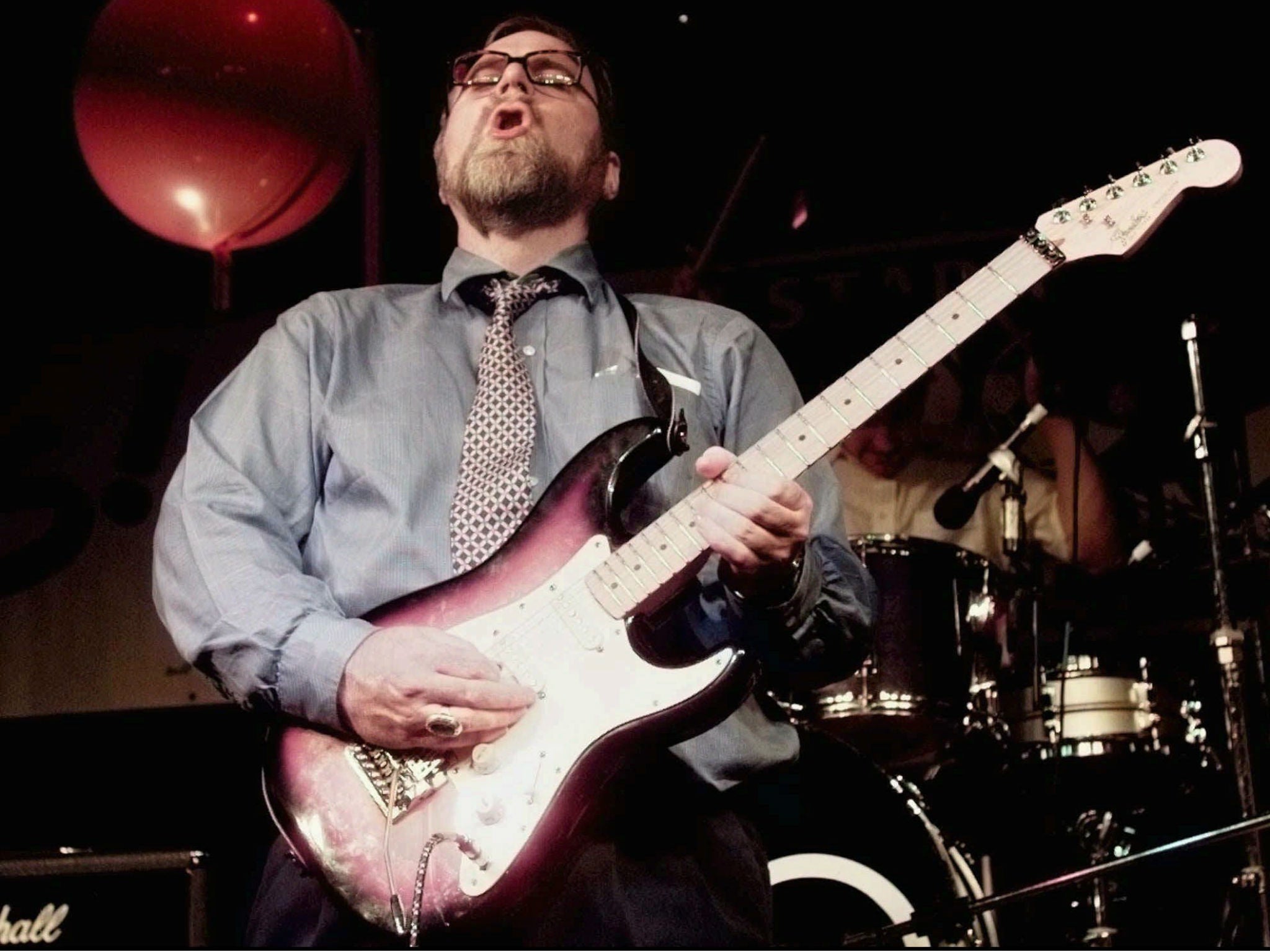Paul Allen: Superyachts, sports teams, warplanes and a Jimi Hendrix museum - the many loves of Microsoft’s ‘idea man’
Allen spent the wealth he gained from Microsoft on everything from space flight to searching for Second World war wrecks - as well as a personal Beoing 757 later bought by Donald Trump

Your support helps us to tell the story
From reproductive rights to climate change to Big Tech, The Independent is on the ground when the story is developing. Whether it's investigating the financials of Elon Musk's pro-Trump PAC or producing our latest documentary, 'The A Word', which shines a light on the American women fighting for reproductive rights, we know how important it is to parse out the facts from the messaging.
At such a critical moment in US history, we need reporters on the ground. Your donation allows us to keep sending journalists to speak to both sides of the story.
The Independent is trusted by Americans across the entire political spectrum. And unlike many other quality news outlets, we choose not to lock Americans out of our reporting and analysis with paywalls. We believe quality journalism should be available to everyone, paid for by those who can afford it.
Your support makes all the difference.Paul Allen described himself as an “idea man” and upon leaving Microsoft in 1983 – the company whose stock would eventually make him worth tens of billions – he set out to spend that money on as many ideas as possible.
“Our great string of successes had married my vision to his unmatched aptitude for business,” Allen wrote about his partnership with Bill Gates in a 2011 memoir. Taking credit for devising the two button mouse and even the company’s very name, Allen would leave Microsoft amid treatment for Hodgkin’s lymphoma and an apparent fallout with Gates.
The owner of 42 US patents, Allen would subsequently invest in a eclectic array of businesses and side projects and charitable efforts. These included a collection of Second World War planes and military hardware, a number of aerospace ventures that drew on his childhood fascination with adventure stories and science fiction, and a museum dedicated to one of his heroes – Jimi Hendrix.
Allen was known as a reclusive, but worth anywhere between $20bn and $26bn at his death – depending on whether you refer to Forbes or Bloomberg’s Billionaires List – he was not without the finer things in life.
He owned a number of luxury yachts, the crown jewel of which was Octopus – a 414-foot behemoth that reportedly cost the tech giant around $200m to build and includes a swimming pool, two helipads, a cinema and enough cabins to sleep dozens of guests. The after-parties aboard the vessel when it was docked for the Cannes Film Festival are said to be the stuff of legend. Octopus even houses its own submarine that is said to be able to sleep up to 10 people.
Another one of Allen’s vessels, the 303-foot Tatoosh includes a recording studio among its wares. Allen looked to sell the yacht a number of times over the years, pricing it as high as $160m and it was one of the largest ships to travel to Sochi to the 2014 Winter Olympic Games.
Allen purchased a Boeing 757-200 in 1995, which would become a runaround for his various corporate interests. He installed a master suite that included a bathroom and guest room, according to records. He put a conference table, overhead projector and bar in the center of the aircraft. Allen also installed 12 sleeper seats, each with their own foldout monitors.
The plane was eventually sold to Donald Trump in a 2010 agreement and although the price was not disclosed, reports suggest it was up to $100m. The plane become known was “Trump Force One” before the now-45th president upgraded to the real Air Force One.
He owned a number of large homes and an extensive art collection with works by Monet, Rodin and Rothko. Some of those pieces would go onto to sell for tens of millions of dollars at auction.


Allen spent heavily on projects in Seattle – where he was born – and around the Pacific Northwest donating more than $1bn to mostly local philanthropic projects. The most notable was his development of Seattle’s Lake Union tech hub that Amazon now calls home with his glass “spheres”. The site also includes the headquarters of the Allen Institute for Brain Science. Allen was also one of the first billionaires to join Gates and Warren Buffett’s Giving Pledge in 2010 - a initiative that aims for the world's wealthiest individuals to give away the majority of their riches.
Allen would focus his charitable efforts on the science of the brain – motivated by the loss of his mother to Alzheimer’s disease – as well as a number of universities and libraries.
Allen owned the Seattle Seahawks American football team – who won a Super Bowl title in 2014 more than a decade after Allen saved them from a potential move to California - and the NBA side the Portland Trailblazers. That is as well as a minority stake in the Seattle Sounders FC football team.

A huge music fan, Allen had a number of high-profile friends including U2 singer Bono. He also released an album an album with his band the Underthinkers in 2013. The blues-rock LP, Everywhere At Once features Allen’s electric guitar on several songs including “Straw Into Gold,” “Six Strings From Hell” and “Pictures Of a Dream.” He also takes the guitar solos on “Down Low” and “Big Blue Raindrops.”
He spent around $250m on a museum initially dedicated to Jimi Hendrix – Experience Music Project – which would eventually morph into the Seattle Museum of Pop Culture, in a Frank Gehry-designed building. The museum is now home to a number of Allen’s cultural obsessions including thousands of items of Hendrix memorabilia and items like Captain Kirk’s command chair from Star Trek.
Elsewhere, Allen funded SpaceShipOne, the first private aircraft to successfully put a civilian in suborbital space. In the last of three record-setting flights it reached a height of 70 miles above Earth. One of his other projects, with Burt Rutan who designed SpaceShipOne, was the Stratolaunch. Yet to take a test flight it is the largest aircraft by wingspan ever created - in what Wired called in a piece earlier this year “385 feet of crazy: The most audacious flying machine ever.”
Starting in the 1990s, Allen also starting amassing a collection of vintage Second World War planes, tanks, vehicles and weapons that would evolve into the Flying Heritage & Combat Museum based about 30 minutes outside Seattle. In 2015, a research team using his yacht Octopus found the wreckage of the Japanese battleship the Musashi, one of the largest warships ever, off the Philippines. Earlier this year, an expedition funded by Allen located the remains of the USS Juneau, which had been sunk by Japanese torpedoes in November 1942, claiming the lives of 687 people.
Allen always said that his life was based on "vision" - whether looking forward into the future or back into the past - and it is his love of new technology as well as his reverence for history that will form a big part of his legacy.
Join our commenting forum
Join thought-provoking conversations, follow other Independent readers and see their replies
Comments